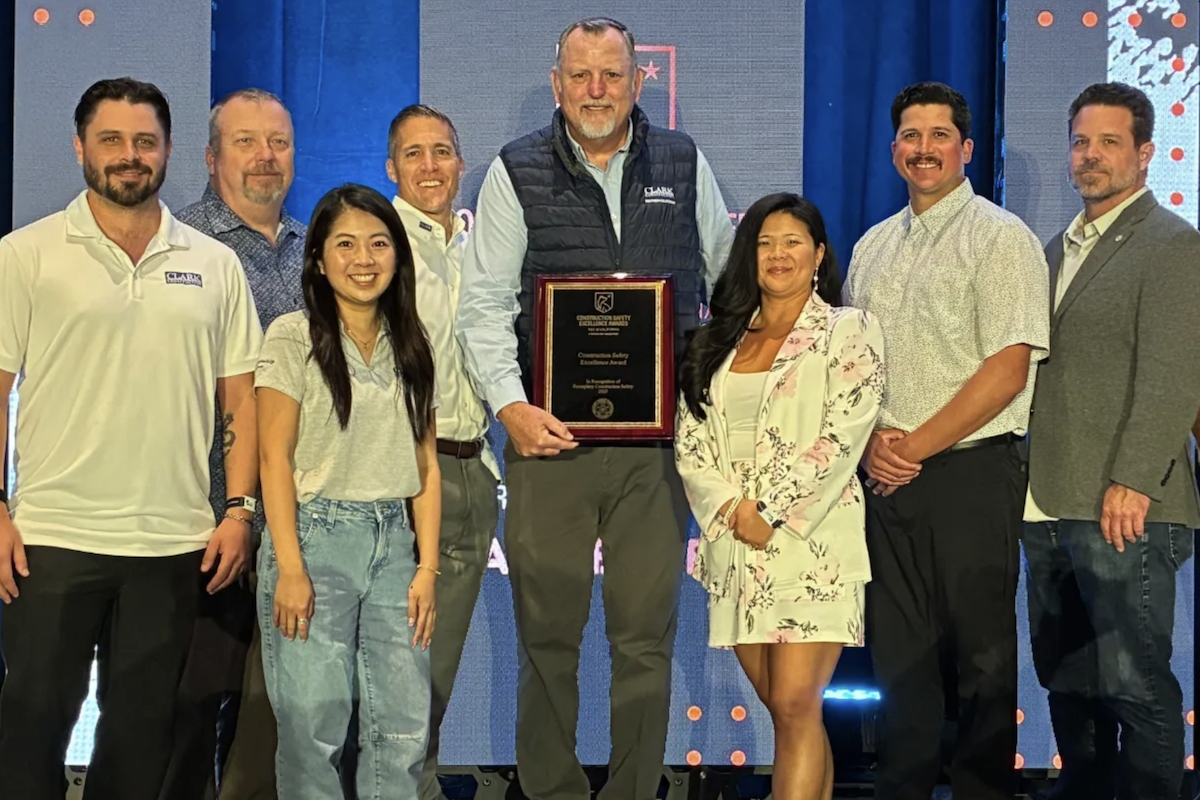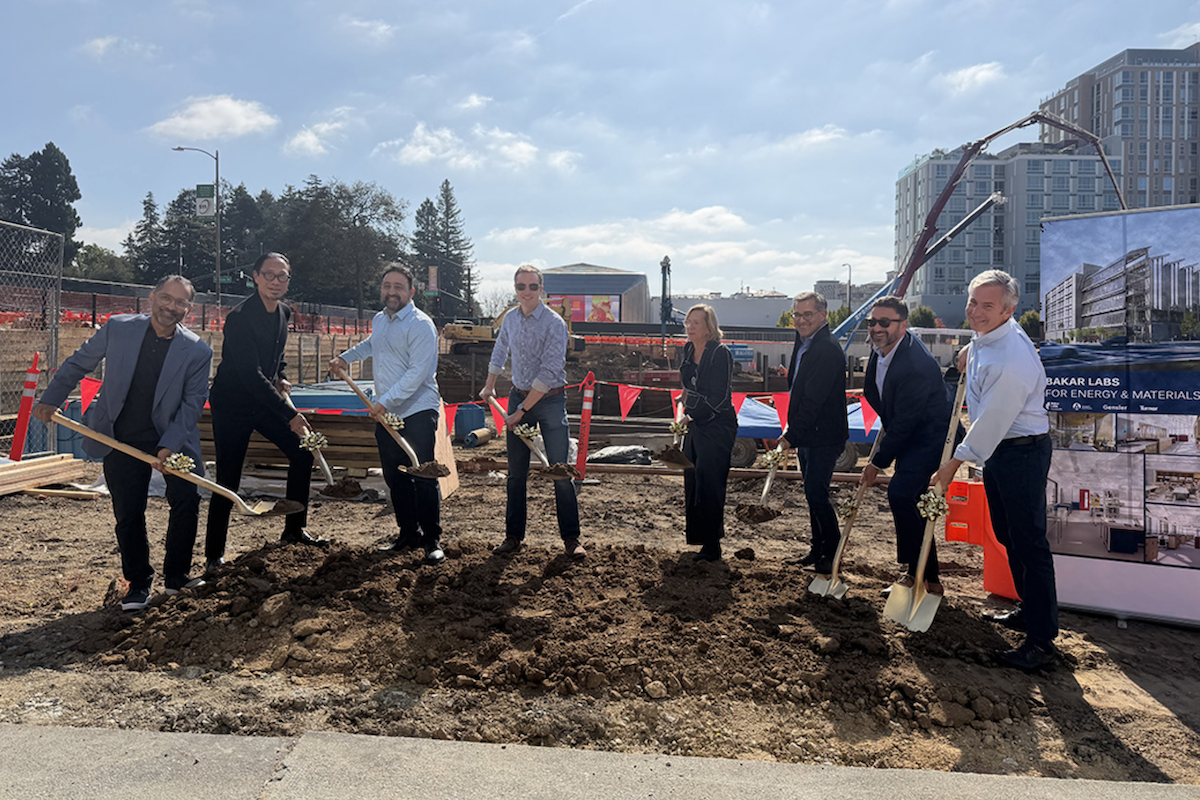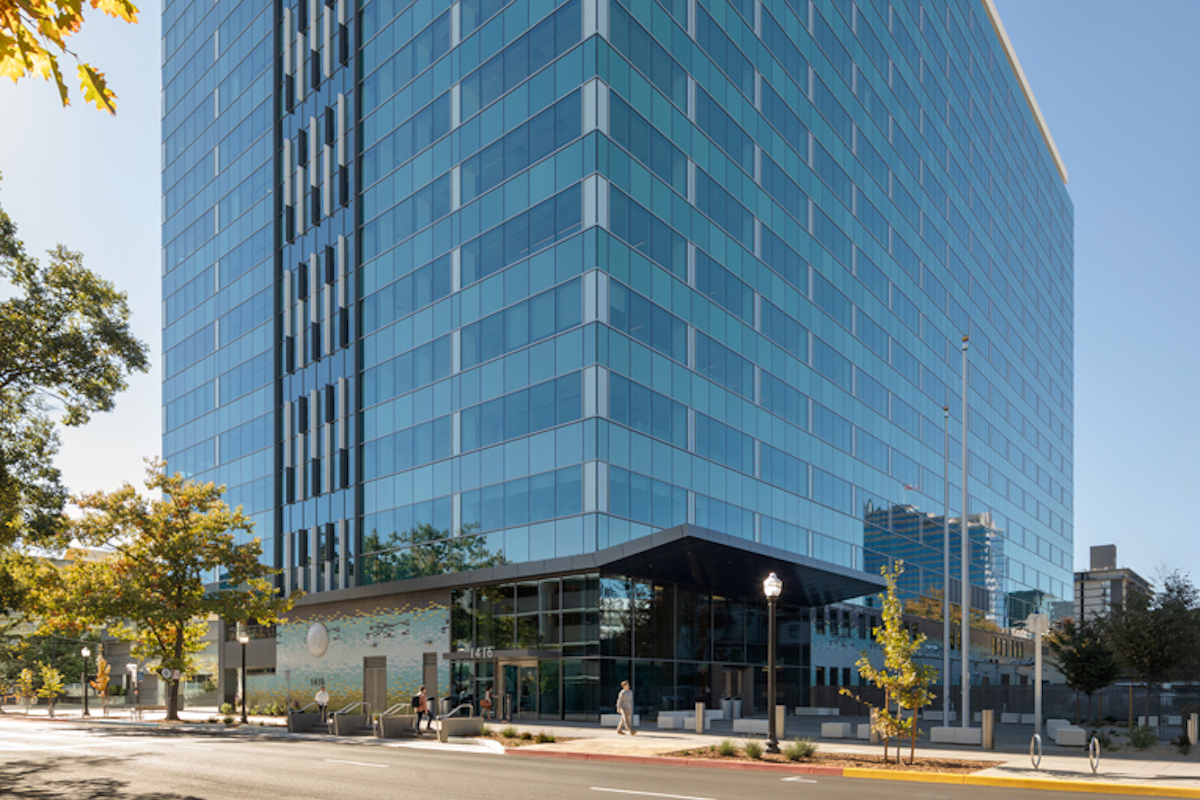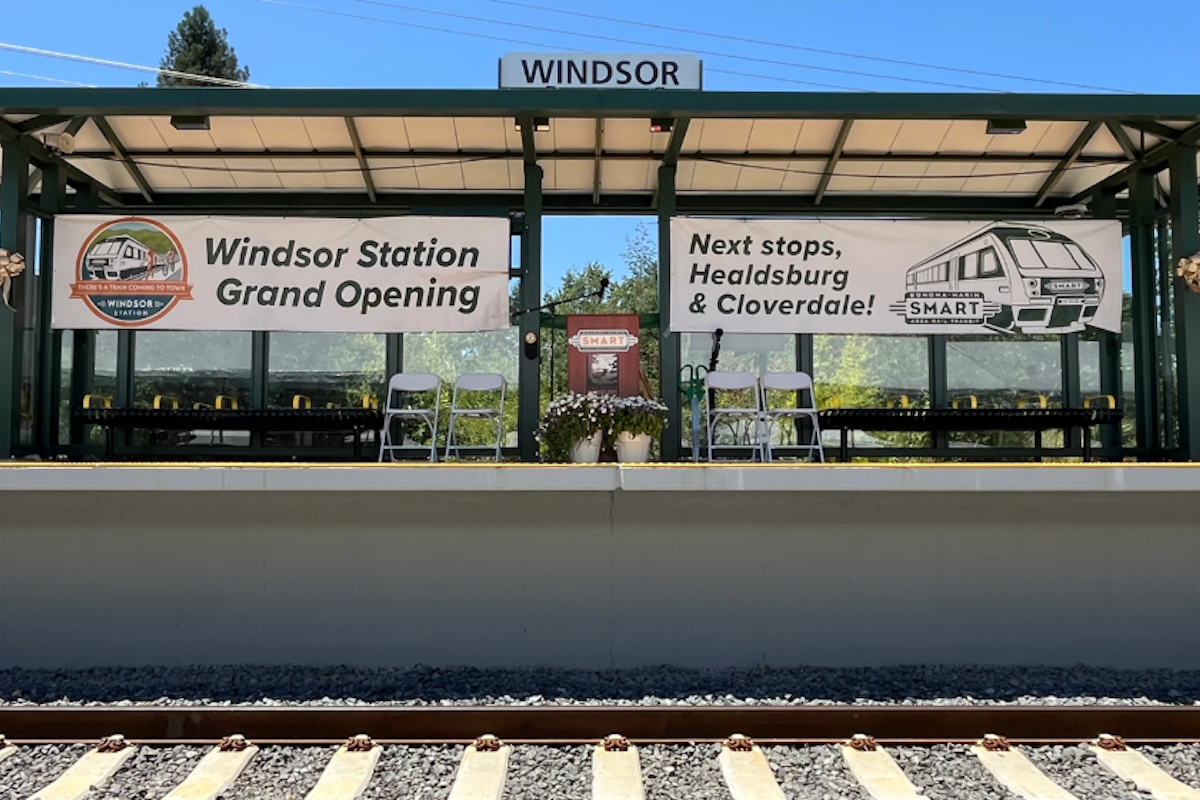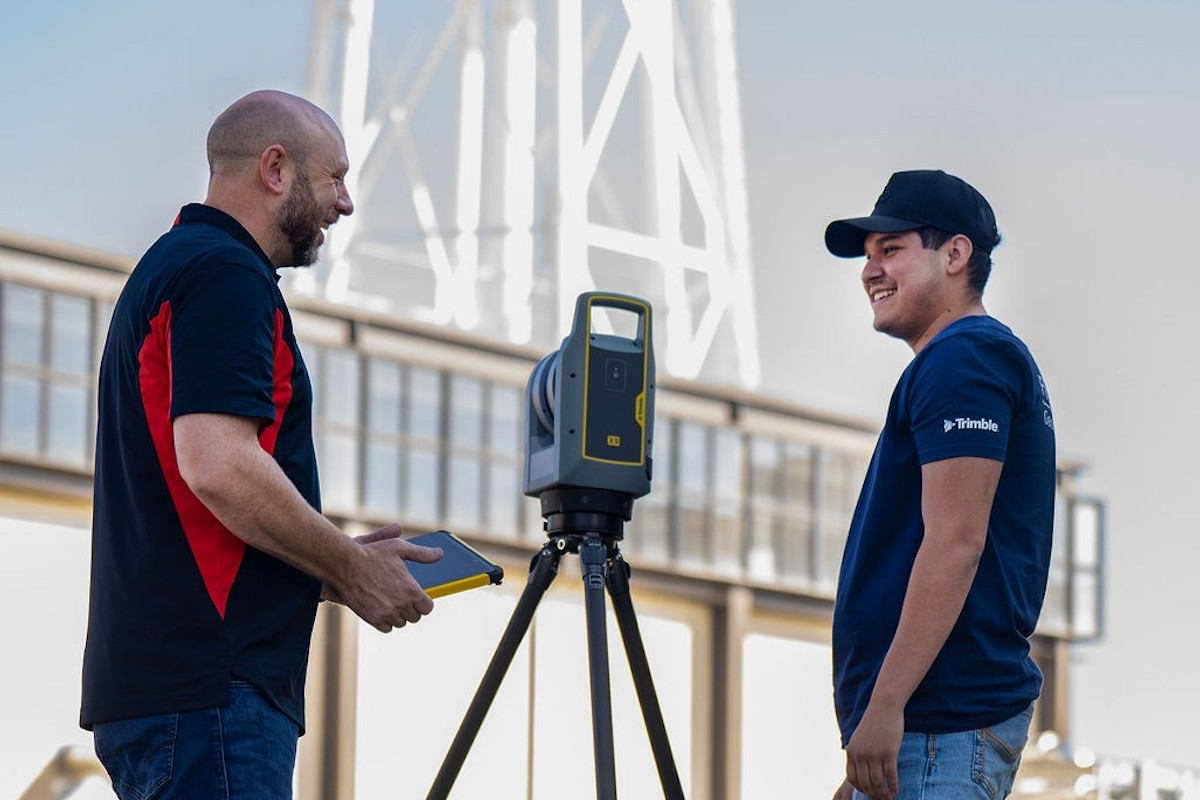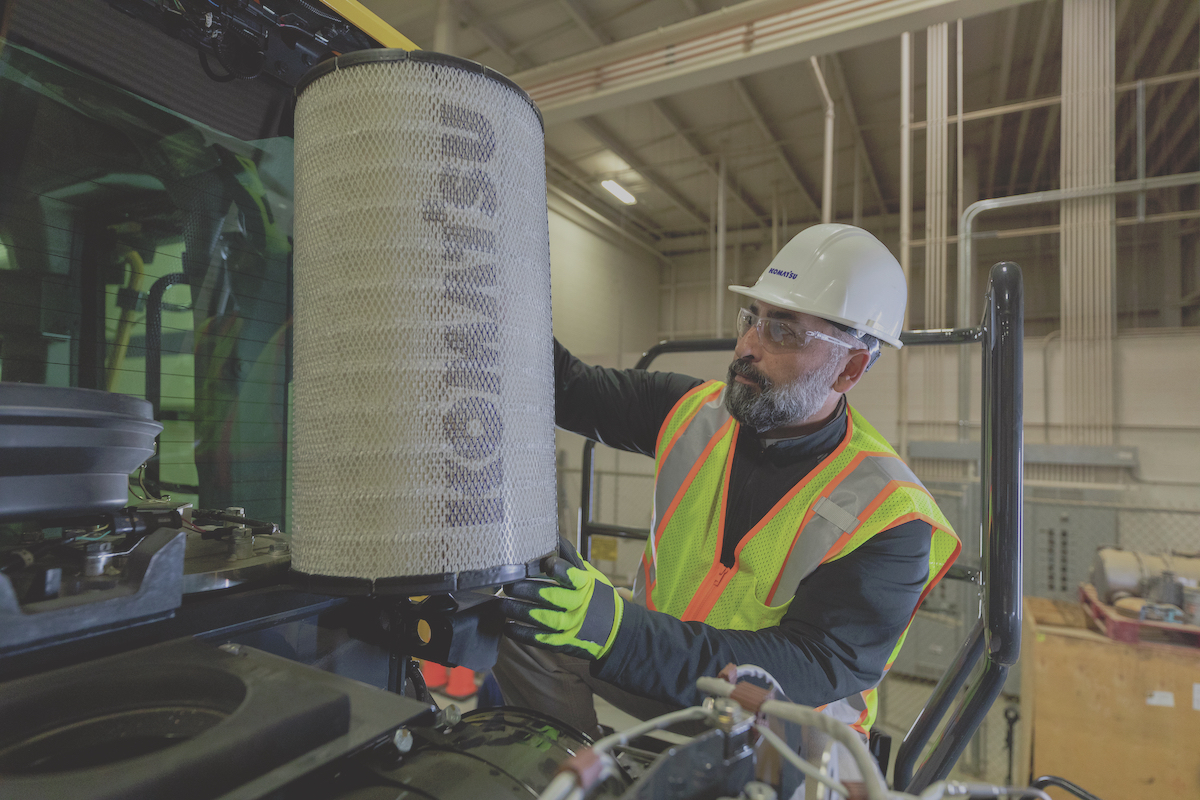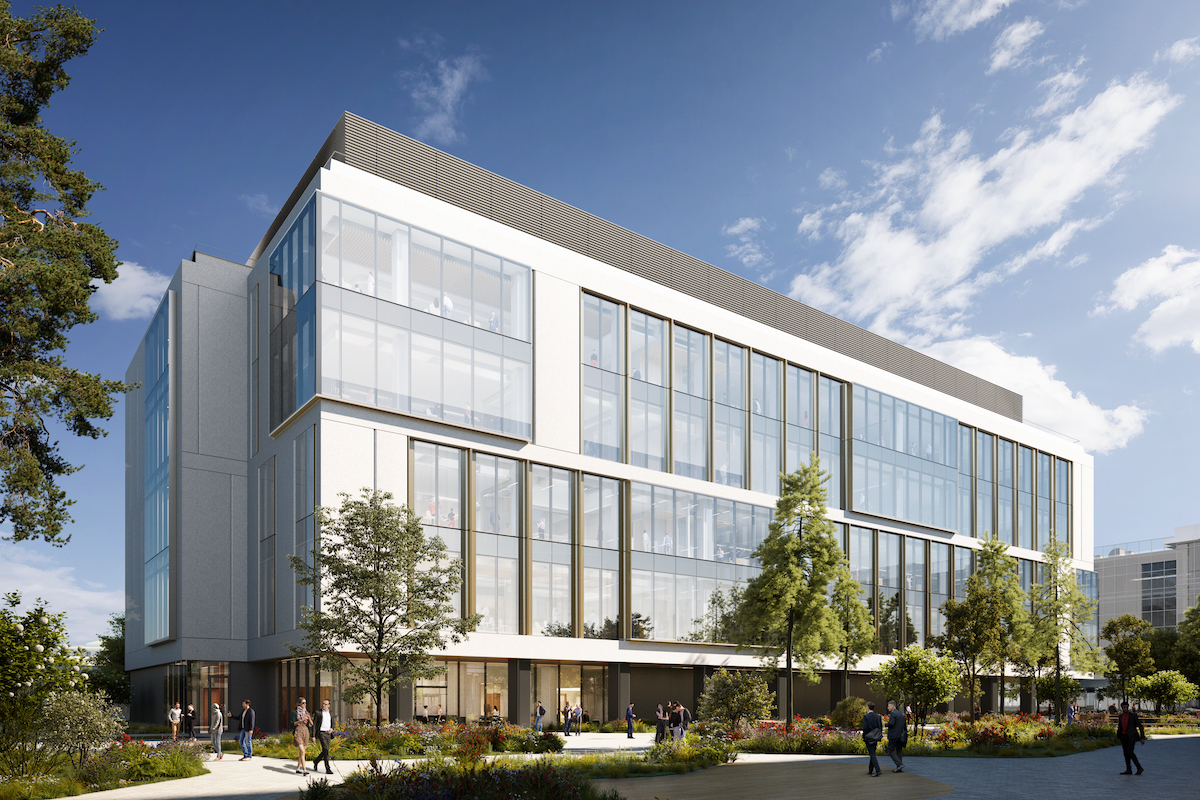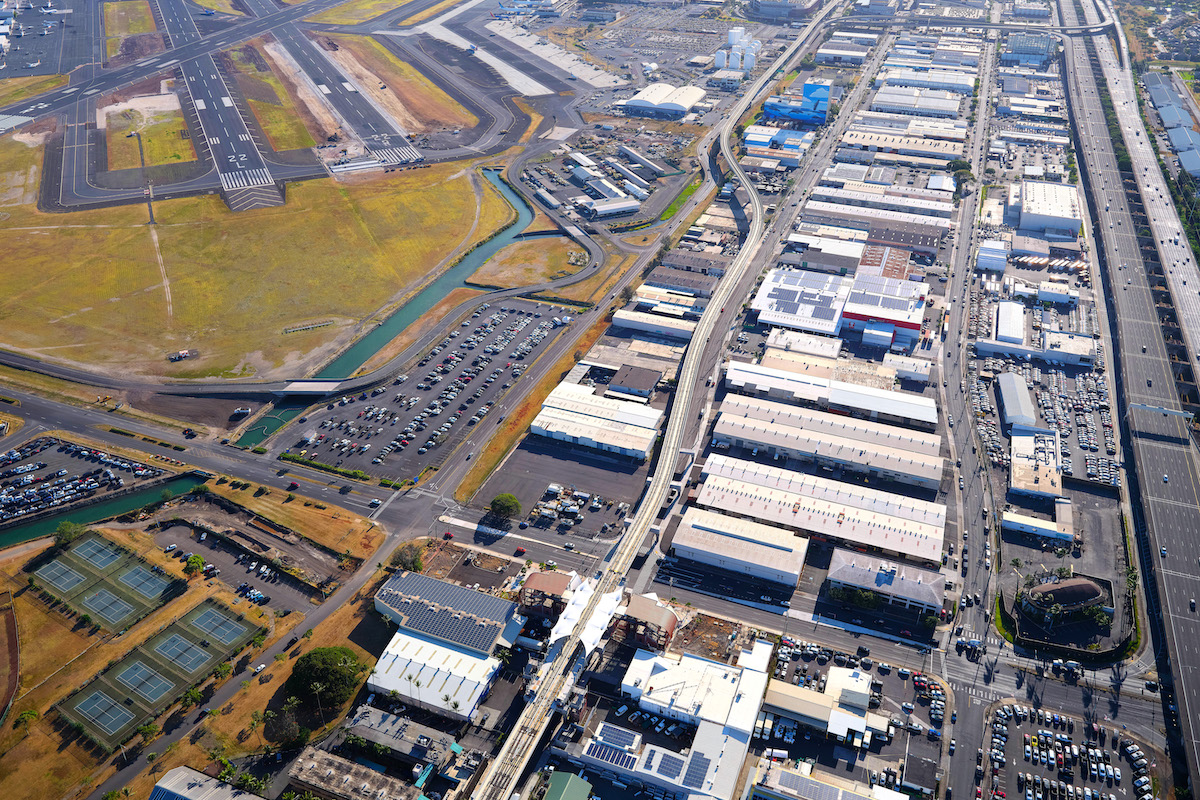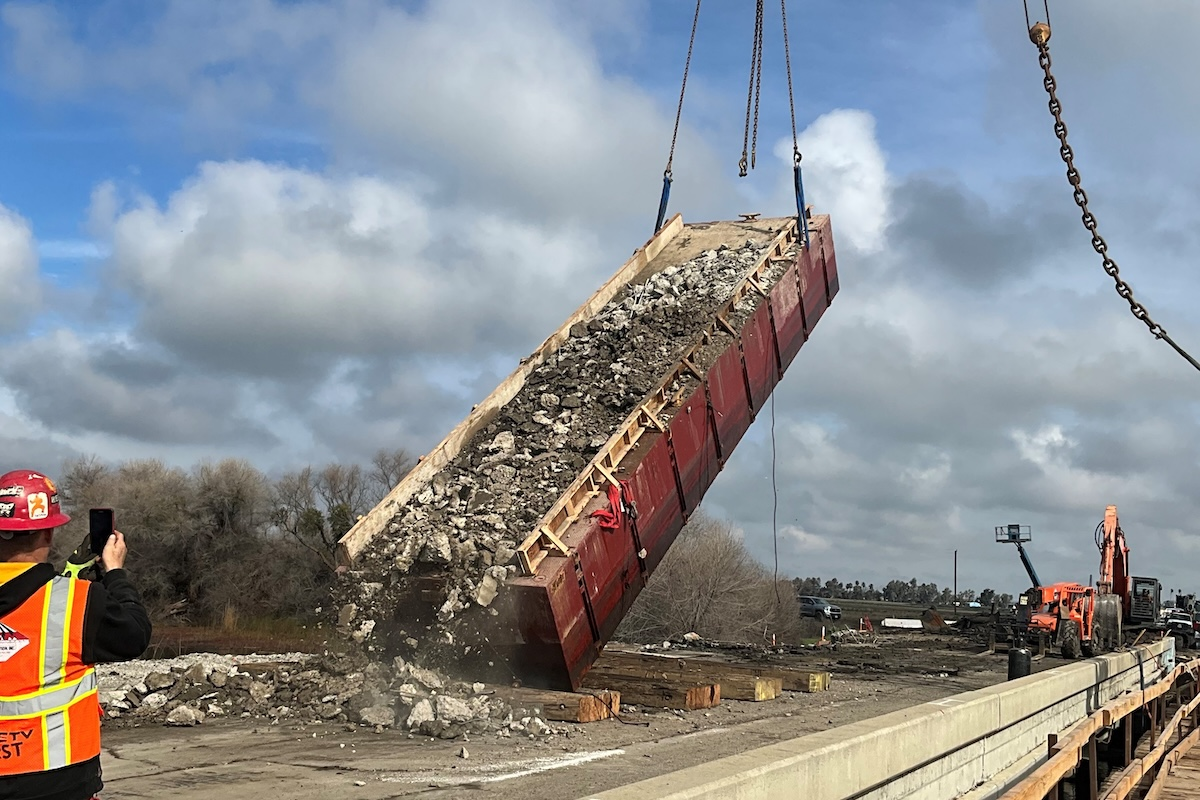Reducing congestion, enhancing safety, and replacing aging infrastructure are the primary drivers of the project. “The interstate and bridges along the corridor were built in the early 1960s and had reached the end of their lifespan,” says Rebecka Stromness, a UDOT Project Manager.
UDOT is replacing 25 lane miles of pavement on I-80 and I-215 with Portland Cement Concrete Pavement (PCCP). The team chose PCCP because it lasts substantially longer on interstates with a high volume of truck traffic and requires less maintenance over its lifespan. In addition, they’re adding an eastbound lane on I-80 over 3.8 miles of the road to help facilitate travel to the growing Salt Lake Valley area. “There’s greater congestion on the east side,” says Stromness. “The project is forward compatible so a westbound lane can be added in the future.”
Other work includes widening one bridge so it’s compatible with the added lane on eastbound I-80. Two bridges, which go over I-80, are being fully replaced. One I-80 bridge over a local road is also being fully replaced. Finally, the team is installing improved drainage, new signs, and improving the existing bike and pedestrian crossings over I-80.
“We did extensive maintenance of traffic, which required lots of cooperation to minimize full closures as much as possible,” says Chris Dillman, a Project Manager for Ralph L. Wadsworth Construction, the general contractor, headquartered in Utah.

| Your local Gomaco dealer |
|---|
| Terry Equipment |
As part of the project’s maintenance of traffic, crews have been shifting traffic on I-80 and I-215 to give them space to reconstruct the roads while keeping traffic moving during each phase of construction. Before the team first shifted traffic on I-80, the project team built two temporary I-80 bridges in the median to accommodate the traffic. These temporary bridges will be demolished after traffic is shifted back to its final configuration.
The team used Accelerated Bridge Construction (ABC) to replace the two bridges over I-80. This method utilizes advanced project planning and design, innovative materials, smarter procurement, and new construction methods to reduce the time and effort it takes to replace or rehabilitate bridges.
Wadsworth used a bridge slide technique to hasten construction. The contractor has completed more than 20 bridge slides on past projects. “We use a tensioning rod and jack system as we find it to be the most efficient and safe,” Dillman says. “It makes the slide very controllable.” It took the team six and a half hours to slide the 5.3 million pound bridge 110 feet laterally.
“The bridge slides were critical for maintenance of traffic,” says Stromness, “as it allowed us to limit the closure of the major urban interchange to one weekend."
Other challenges the team faced were industry-wide and related to the pandemic. These included material shortages, long lead times, and labor shortages. To minimize these challenges and impacts, the team worked with longer lead times, adjusted phasing to have more efficient work areas, and worked on design packages to get girders procured.
The team utilized an on-site on-grade mobile crush unit. The recycled concrete was made into a base and incorporated into the new roadway. This led to less tracking of sources, and increased efficiency and cost savings.
This innovation, as evidenced by their experience with lateral bridge slides, is one of the reasons Wadsworth won the project. The bridge slides reduced the project length.
Construction on this design-build project began in May 2021 and will continue through 2023. Some minor work may need to be completed in the spring of 2024. Billman notes the team has managed to stay on schedule despite the COVID-related issues. “We worked with UDOT to optimize work zones, reduce and change the project phases, and perform cold weather paving.”
The $146.5 million construction project is being funded by federal and state sources. Due to the pandemic issues, the project is slightly over budget. UDOT has covered the added funds.
Drivers and pedestrians will experience many benefits once the project is complete. The added trails on two bridges will allow pedestrians and bikers greater access to Sugar House Park. The new drainage along the interstates will eliminate the ponding issues that periodically arose. Updated signage and more robust pavement marking will make the interstates safer. Finally, one of the bridge structures was deficient in height and was getting hit a couple of times a year. The new structure is higher which should eliminate the issue.
All this is in addition to a smoother driving surface and increased capacity. The Crossroads to the West is improved.

























